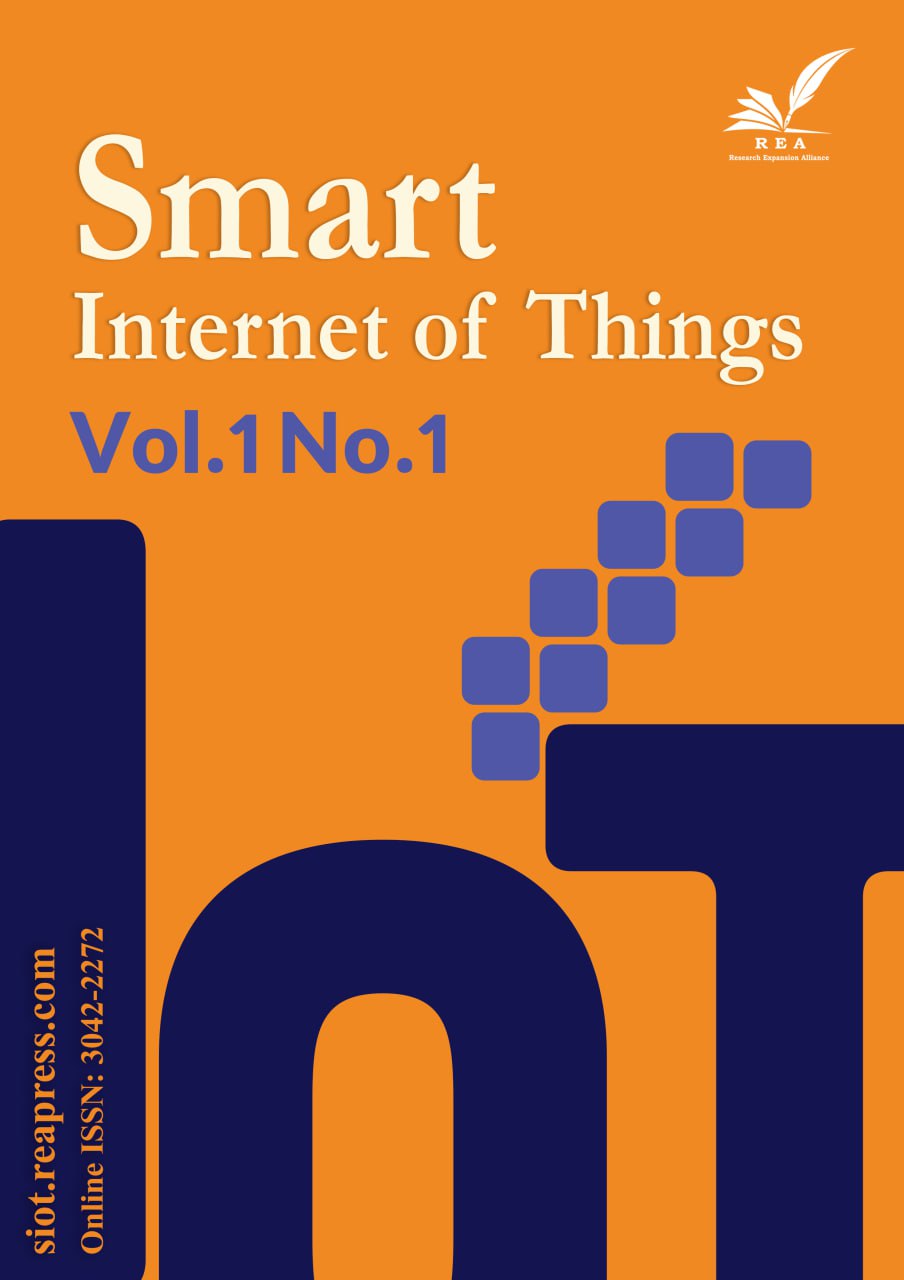From Theory to Practice: Addressing Load Balancing Challenges in Real-Time Cloud Applications
Abstract
The world is currently steered by the paradigms of cloud technology. The internet tools work in alignment with cloud technologies, since they have become its essential components. It addresses challenges like load balancing which ensures efficient distribution of traffic among multiple servers for optimal service delivery. This paper is therefore dedicated to finding out how to identify and solve specific challenges related to load balancing in real time cloud computing applications. The existing study therefore puts in doubt the notion that universal load balancing technology can be used for all cloud applications. This revelation highlights a notable void in literature and practices, expressing the need for customised strategies responsive to customers’ needs on a real time basis. Our results show that if adapted balancing solutions are used, instead of traditional techniques, real-time system’s performance can profit from improved efficiency and reliability. Hence, this work enhances our understanding of the subtleties of cloud computing, especially those issues which affect its ability to perform well in diverse applications. These findings pave the way for future research on more reliable and efficient cloud services that can increase overall impact on technological growth as well as influence both digital and physical environments.
Keywords:
Cloud Computing, Load Balancing, Load Balancing Algorithms, Real-time ApplicationsReferences
- [1] [1] Kumar, P., & Kumar, R. (2019). Issues and challenges of load balancing techniques in cloud computing: a survey. ACM computing surveys (CSUR), 51(6), 1–35.
- [2] [2] Sun, D., Zhang, C., Gao, S., & Buyya, R. (2024). An adaptive load balancing strategy for stateful join operator in skewed data stream environments. Future generation computer systems, 152, 138–151. https://www.sciencedirect.com/science/article/pii/S0167739X23004016
- [3] [3] Mukherjee, S., & Mohapatra, H. (2024). Performance analysis of different manet routing protocols. 2024 5th international conference on innovative trends in information technology (ICITIIT) (pp. 1–6). IEEE.
- [4] [4] Kang, J., & Waddington, D. G. (2012). Load balancing aware real-time task partitioning in multicore systems. 2012 IEEE international conference on embedded and real-time computing systems and applications (pp. 404–407). IEEE.
- [5] [5] Mohapatra, H. (2021). Socio-technical challenges in the implementation of smart city. 2021 international conference on innovation and intelligence for informatics, computing, and technologies (3ICT) (pp. 57–62). IEEE. DOI: 10.1109/3ICT53449.2021.9581905
- [6] [6] El Kabbany, G. F., Wanas, N. M., Hegazi, N. H., & Shaheen, S. I. (2011). A dynamic load balancing framework for real-time applications in message passing systems. International journal of parallel programming, 39, 143–182.
- [7] [7] Beltran, M., & Guzman, A. (2008). Designing load balancing algorithms capable of dealing with workload variability. 2008 international symposium on parallel and distributed computing (pp. 107–114). IEEE.
- [8] [8] Mohapatra, H., & Rath, A. K. (2019). Fault tolerance in WSN through PE-LEACH protocol. IET wireless sensor systems, 9(6), 358–365. https://ietresearch.onlinelibrary.wiley.com/doi/abs/10.1049/iet-wss.2018.5229
- [9] [9] Shahid, M. A., Islam, N., Alam, M. M., Su’ud, M. M., & Musa, S. (2020). A comprehensive study of load balancing approaches in the cloud computing environment and a novel fault tolerance approach. IEEE access, 8, 130500–130526. https://ieeexplore.ieee.org/stamp/stamp.jsp?tp=&arnumber=9139971
- [10] [10] Aslanpour, M. S., Toosi, A. N., Cheema, M. A., Chhetri, M. B., & Salehi, M. A. (2024). Load balancing for heterogeneous serverless edge computing: a performance-driven and empirical approach. Future generation computer systems, 154, 266–280. https://www.sciencedirect.com/science/article/pii/S0167739X24000207
- [11] [11] Mahmood, T., & ur Rehman, U. (2024). Providing decision-making approaches for the assessment and selection of cloud computing using bipolar complex fuzzy Einstein power aggregation operators. Engineering applications of artificial intelligence, 129, 107650. https://www.sciencedirect.com/science/article/pii/S0952197623018341
- [12] [12] Mohapatra, H., & Rath, A. K. (2019). Detection and avoidance of water loss through municipality taps in India by using smart taps and ICT. IET wireless sensor systems, 9(6), 447–457. https://ietresearch.onlinelibrary.wiley.com/doi/abs/10.1049/iet-wss.2019.0081
- [13] [13] Liu, D., Shang, W., Zhu, L., & Feng, D. (2016). An improved dynamic load-balancing model. 2016 4th intl conf on applied computing and information technology/3rd intl conf on computational science/intelligence and applied informatics/1st intl conf on big data, cloud computing, data science & engineering (ACIT-CSII-BCD) (pp. 337–341). IEEE.
- [14] [14] Joshi, S., & Kumari, U. (2016). Load balancing in cloud computing: challenges & issues. 2016 2nd international conference on contemporary computing and informatics (IC3I) (pp. 120–125). IEEE.
- [15] [15] Mohapatra, H., & Rath, A. K. (2020). Fault-tolerant mechanism for wireless sensor network. IET wireless sensor systems, 10(1), 23–30. https://ietresearch.onlinelibrary.wiley.com/doi/abs/10.1049/iet-wss.2019.0106
- [16] [16] Akay, O., & Erciyeş, K. (2003). A dynamic load balancing model for a distributed system. Mathematical and computational applications, 8(3), 353–360.
- [17] [17] Sultan, O. H. F., & Khaleel, T. A. (2022). Challenges of load balancing techniques in cloud environment: a review. Al-rafidain engineering journal (AREJ), 27(2), 227–235.
- [18] [18] Welch, L. R., Werme, P. V, Shirazi, B. A., Cavanaugh, C. D., Fontenot, L., Huh, E. N., & Masters, M. W. (2000). Load balancing for dynamic real-time systems. Cluster computing, 3, 125–138.
- [19] [19] Shu, B., Chen, H., & Sun, M. (2017). Dynamic load balancing and channel strategy for apache flume collecting real-time data stream. 2017 IEEE international symposium on parallel and distributed processing with applications and 2017 IEEE international conference on ubiquitous computing and communications (ispa/iucc) (pp. 542–549). DOI: 10.1109/ISPA/IUCC.2017.00089
- [20] [20] Bokhari, M. U., Alam, M., & Hasan, F. (2016). Performance analysis of dynamic load balancing algorithm for multiprocessor interconnection network. Perspectives in Science, 8, 564-566.
- [21] [21] Domanal, S. G., & Reddy, G. R. M. (2015). Load balancing in cloud environment using a novel hybrid scheduling algorithm. 2015 ieee international conference on cloud computing in emerging markets (CCEM) (pp. 37–42). IEEE.
- [22] [22] Sriram, G. S. (2022). Challenges of cloud compute load balancing algorithms. International research journal of modernization in engineering technology and science, 4(1), 1186–1190.
- [23] [23] Balaji, K. (2021). Load balancing in cloud computing: issues and challenges. Turkish journal of computer and mathematics education (Turcomat), 12(2), 3077–3084.
- [24] [24] Mohapatra, H., & Rath, A. K. (2020). Survey on fault tolerance-based clustering evolution in WSN. IET networks, 9(4), 145–155. https://ietresearch.onlinelibrary.wiley.com/doi/abs/10.1049/iet-net.2019.0155


